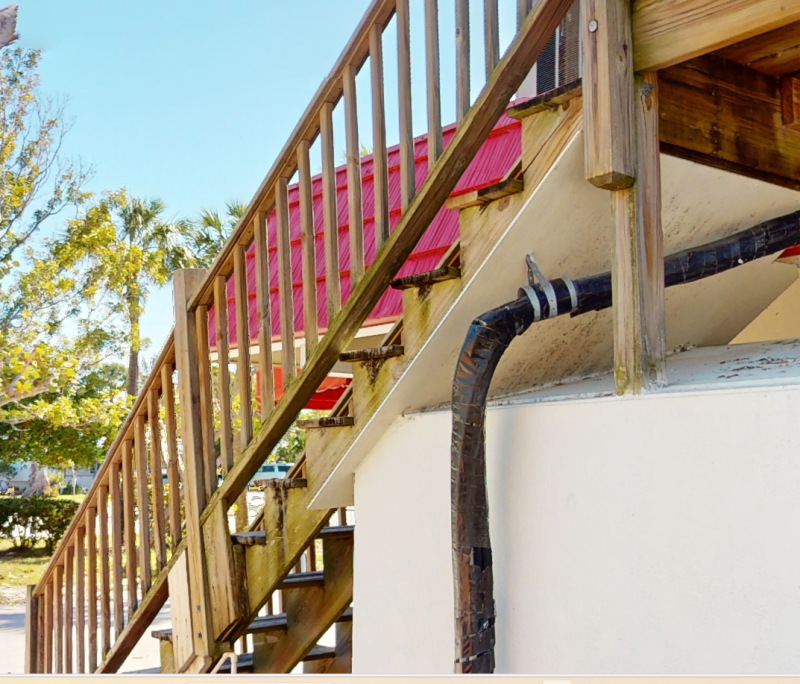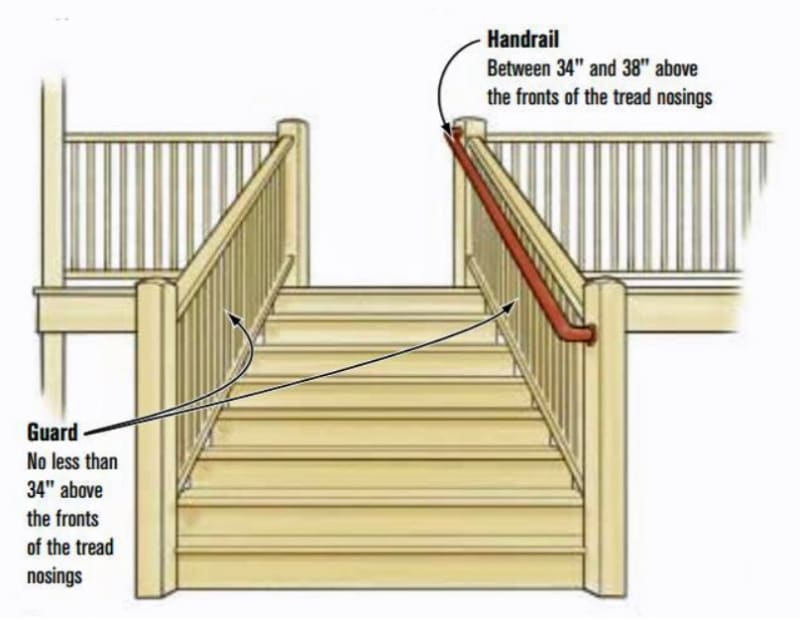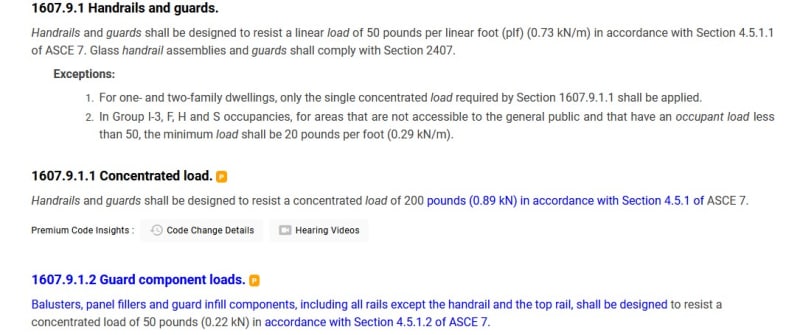It's possible there's something that is being applied here as "code" that doesn't strictly apply.
Code calls for a guard at a free edge (or something similar) and that's where the 50 plf, 200 pound point load (I don't think it's 250 pounds as you state), and the 4" sphere passage shows up. (21: sphere passage for a roof). The 4" thing applies to open risers on stairs, but the other items, I'm not absolutely certain.
The intent is to prevent someone from falling into free space from a height exceeding (what was it? 18"? 3'? I forget. Anyway, that's what I'm wondering. The 4" sphere is to keep a crawling infant from becoming trapped between the infill, the treads, etc.
On a stair, the objective is to prevent a fall, and it's a handrail. So the guard load you are applying may not actually be required? Now, those loads might be the same thing, I don't know offhand... maybe someone else does.
OSHA has other requirements, but that's for worker safety so like the toe guard isn't in the IBC/IRC. They may have requirements on stairs that are more "rational" for this situation?
Guards, Handrails, and the IRC, Matthewson, Journal of Light Construction, Oct 9, 2021.





